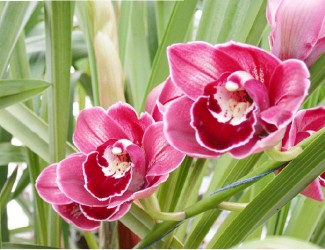Orchids belong to the Orchidaceae family and the name orchid derives from the Greek word ‘orchis’ which means ‘testicle’ ‒ a term that describes the roots of the orchids.
Orchids originated in the Far East and are best described as fascinating, mysterious or magnificent. They are simply beautiful.
 There are various myths surrounding orchids, namely, that they are parasites, they are expensive and only the wealthy collect them. Actually, the truth is that today’s modern hybrids are available at reasonable prices and are easy to grow.
There are various myths surrounding orchids, namely, that they are parasites, they are expensive and only the wealthy collect them. Actually, the truth is that today’s modern hybrids are available at reasonable prices and are easy to grow.
By the way, no orchid is parasitic. They are epiphytic. This means that although they grow on another plant (such as a tree) for physical support, they do not take water or nutrients from that plant as a parasite would. Instead they get these from the air and rain.
Orchids grow in one of two ways, either in a monopodial pattern, where there is growth from a single point, or a sympodial one where there are a number of lateral branches. Most orchids are sympodial.
Examples of sympodial growth are the Cattleya, Cymbidium and Dendrobium, while examples of monopodial growth would be the Ascocenda and Vanda.
Until next week, happy gardening!







